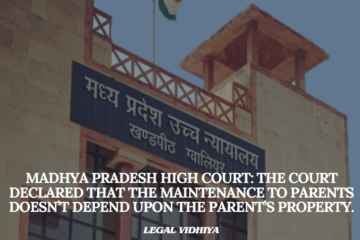
Mahadev Gaur Bishwas v. State of Maharashtra & Anr
little girl, “X”, born on 9/6/2014 underwent a harrowing experience, barely 3 years five months when she was sexually outraged by a man residing in her neighborhood whom she referred to as ‘uncle’, her friend’s father.
On 6/11/2017, in the afternoon hours, while she was playing with her siblings, with her mother just around, she was taken to the house by the accused and he fingered her, as a result, she started bleeding. The little girl rushed to her mother and took off her panty and went to the toilet. She was unable to pass urine and was touching her private part and shouting in pain and agony. The mother noticed blood coming out and when she inquired, the victim disclosed to her that it was Sanya’s father, the accused, who had put his finger in the place of urinating, which was paining.
The court based its decision on both the medical evidence and the statement given by the mother that her daughter was bleeding.
Justice Bharati Dangre, who was the sole judge presiding over the case, rejected the appeal filed by the accused who contested his conviction for penetrative sexual assault under Section 6 of the POCSO Act and for rape under Section 376 of the Indian Penal Code (IPC), as pronounced by a special judge in Mumbai.
The Bombay High Court upheld the conviction of an individual under the Protection of Children from Sexual Offences Act (POCSO Act) for raping a minor and noted that it is unrealistic to expect a girl under 3.5 years of age to provide an accurate description of her private body parts.
After a first information report (FIR) was registered the next day, the accused was arrested, and the child’s parents took her to a government hospital for examination. During the trial, the prosecution presented, 8 witnesses for examination, including the victim, her mother, and the gynecologist, among others.
After being convicted by the trial court, the accused filed an appeal to the High Court. The High Court observed that there was no justification to doubt the victim’s testimony given during the trial, where she accused the accused of committing the act.
According to the Court, the young girl was innocent and not capable of comprehending the implications of the act that was committed against her. Additionally, the Court saw no reason for the child’s mother to encourage her at such a young age to fabricate allegations of such a heinous act.
Justice Dangre stated that the courts aimed to appropriately punish the accused for inflicting trauma upon the victim, which could potentially have long-lasting effects, by convicting him.
Written by Rishav raj BBA ll.b 4th semester ( RNB GLOBAL UNIVERSITY )




0 Comments